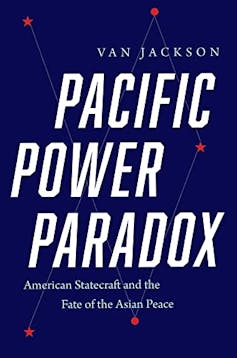Australian foreign policy is traditionally hitched to the US – but the rise of China requires a middle path for a middle power
- Written by Mark Beeson, Adjunct professor, University of Technology Sydney

Few nation-states have been shaped by their underlying physical geography and location in the world quite as much as Australia.
Since notional foreign policy independence was uneasily embraced during the second world war, Australia’s policymaking elites have had trouble deciding whether it was a curse or a blessing to be in possession of an entire continent and a long way from potential sources of conflict. This is still considered a defining challenge.
The traditional way Australia’s leaders have dealt with the pervasive sense of vulnerability that geographic isolation engendered was to ingratiate themselves with “great and powerful friends”. Not much has changed in this regard either, although our current notional protector – the United States – is neither as reliable nor as powerful as policymakers in the US or this country seem to believe.
Even more alarmingly for Canberra’s cognoscenti, part of the reason for America’s relative decline is the reemergence of China as the most powerful economic and strategic actor in our immediate neighbourhood.
Dealing with an Asian “great power” adds another layer of complexity for policymakers who instinctively cleave to traditional allies, as the recently agreed AUKUS security pact demonstrates.
Review: Pacific Power Paradox: American Statecraft and the Fate of the Asian Peace – Van Jackson (Yale University Press); Engaging China: How Australia can lead the way again – edited by Jamie Reilly and Jingdong Yuan (Sydney University Press).
Aspects of this awkward reality are directly or indirectly analysed in the two books under review here.
Although Van Jackson’s outstanding, historically informed analysis of US statecraft in the Asia-Pacific deals with Australia only in passing, Pacific Power Paradox[1] is an essential guide to the regional geopolitics upon which our national peace and prosperity overwhelmingly depend.
Engaging China[2], edited by Jamie Reilly and Jingdong Yuan, looks at what this rapidly evolving and increasingly unpredictable environment means for Australia’s relations with the People’s Republic.
One hopes these books will be the proverbial “must reads” for our strategic and economic elites, and that their important lessons will be absorbed and even acted upon. To judge by recent events, however, nothing seems less likely. The contentious decisions to acquire nuclear-powered submarines and manufacture US missiles[3] have only entrenched Australia in America’s anti-China alliance.
Read more: The AUKUS pact, born in secrecy, will have huge implications for Australia and the region[4]
Regionalism with American characteristics
One of the most noteworthy and optimistic facts about the Asia-Pacific – or the more fashionable Indo-Pacific, for that matter – is that it has generally been peaceful.
This is more of a surprise than it seems, given that generations of US policymakers and strategic commentators have predicted chaos and mayhem in the region, especially in the absence of America’s supposedly benign, selfless and stabilising influence. Many still do, especially because of the “rise of China”.
A couple of points are worth making at the outset, however. China has not been an aggressive power hitherto, and it is far from certain it is going to be in the future. The US, by contrast, has been at war with someone somewhere for more than 90% of its history as an independent nation.

















